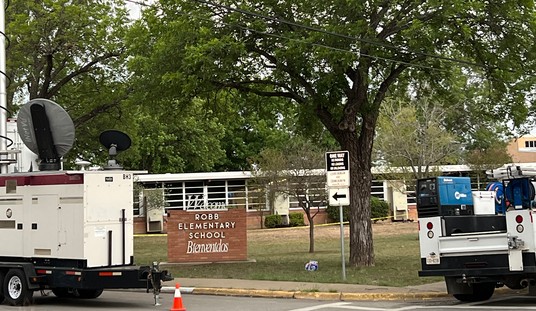Barring some major break in the investigation, we may never know what spurred the Las Vegas shooter to take so many lives. But watching the continuing coverage of that horror show, there’s one thing we do know for sure. These mass shootings are growing more and more frequent no matter what we do to try to prevent them, right?
Not so fast, Skippy. It may seem that way when cable news channels are saturating the airwaves with stories about it, but a recent study from the University of Illinois tells a different story. Over the past decade, the number of mass killings (a subtle but important distinction from “mass shootings” which we’ll get to in a moment) has actually remained constant. (CBS Chicago)
Research by of University of Illinois professor has revealed a surprising trend about mass murder in the United States.
Contrary to what you might think, mass murders are not on the rise, according to computer science professor Sheldon Jacobson.
Jacobson said there were 323 such killings – in which four or more people are killed in one incident – between January 2006 and October 2016. The mass killings appeared to be evenly distributed over that time, meaning their rate remained stable over the past decade, and did not spike during any particular season or year.
“The data doesn’t lie. The rate of these events just is not increasing as the perception is given in the media. This is just what it is,” he said.
You can find a more extensive summary of the study at the University of Illinois website and the full study is available for download here. Of course, if you’ve been following the history of these shooting events you probably already knew that catastrophes such as the one in Las Vegas or the previous attack at Sandy Hook are outliers in terms of who perpetrates them and how they are executed.
Much of the breakdown in perceptions seems to arise from the math used to calculate these statistics and the media’s willingness to cover them. First of all, at some point we collectively settled on the definition of a “mass shooting” as being any single event where four or more people are shot, regardless of whether or not anyone died. That opens up a lot of criminal activity for inclusion in the statistics. Mass murders or mass killings are counted differently as the name implies. The Illinois study groups mass murders into four different categories and shows that their distribution is essentially random, but remains relatively constant from year to year.
Massive attacks like the one in Las Vegas are far rarer than family mass murders, where one member of a household goes over the edge and takes out a significant number of family members. Mental illness, depression and domestic violence issues all play into those tragedies. Terror attacks, such as the one in San Bernardino, fall into another category of their own. They are equally unpredictable in terms of frequency, but at least the motive is known and intelligence agencies are often able to get a handle on the networks which inspire and facilitate them.
When we get back to the broader category of mass shootings (which may or may not include any deaths) the field opens up considerably. The greatest clusters of such shootings take place, as you might suspect, in larger cities and are perpetrated by street gangs. These are also the ones which receive the least attention in the media. For evidence of that, look no further than the almost complete news blackout of the second largest mass shooting of 2015 which took place at Bunny Friend Park in New Orleans.
Studies such as this one are useful as we debate the problem of how to prepare for and confront mass shooting attacks. The study concludes that trying to predict when or where such an attack may take place is highly problematic at best. With that in mind, the best approach is to ensure that every community has “a robust response system.” Having the infrastructure in place to quickly respond in a crisis, combined with well trained and equipped first responders is the key to preventing a tragedy from turning into a catastrophe.








Join the conversation as a VIP Member